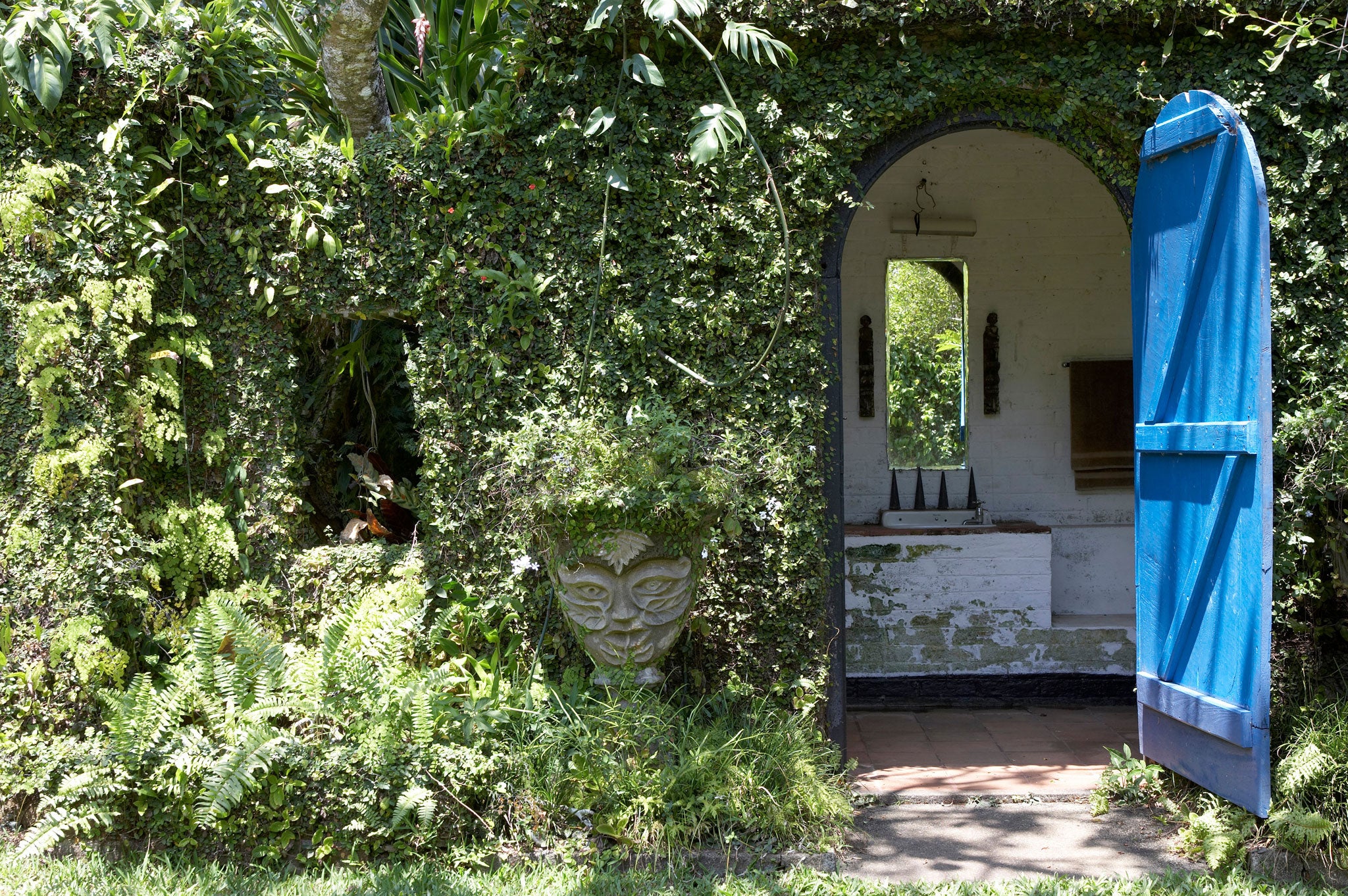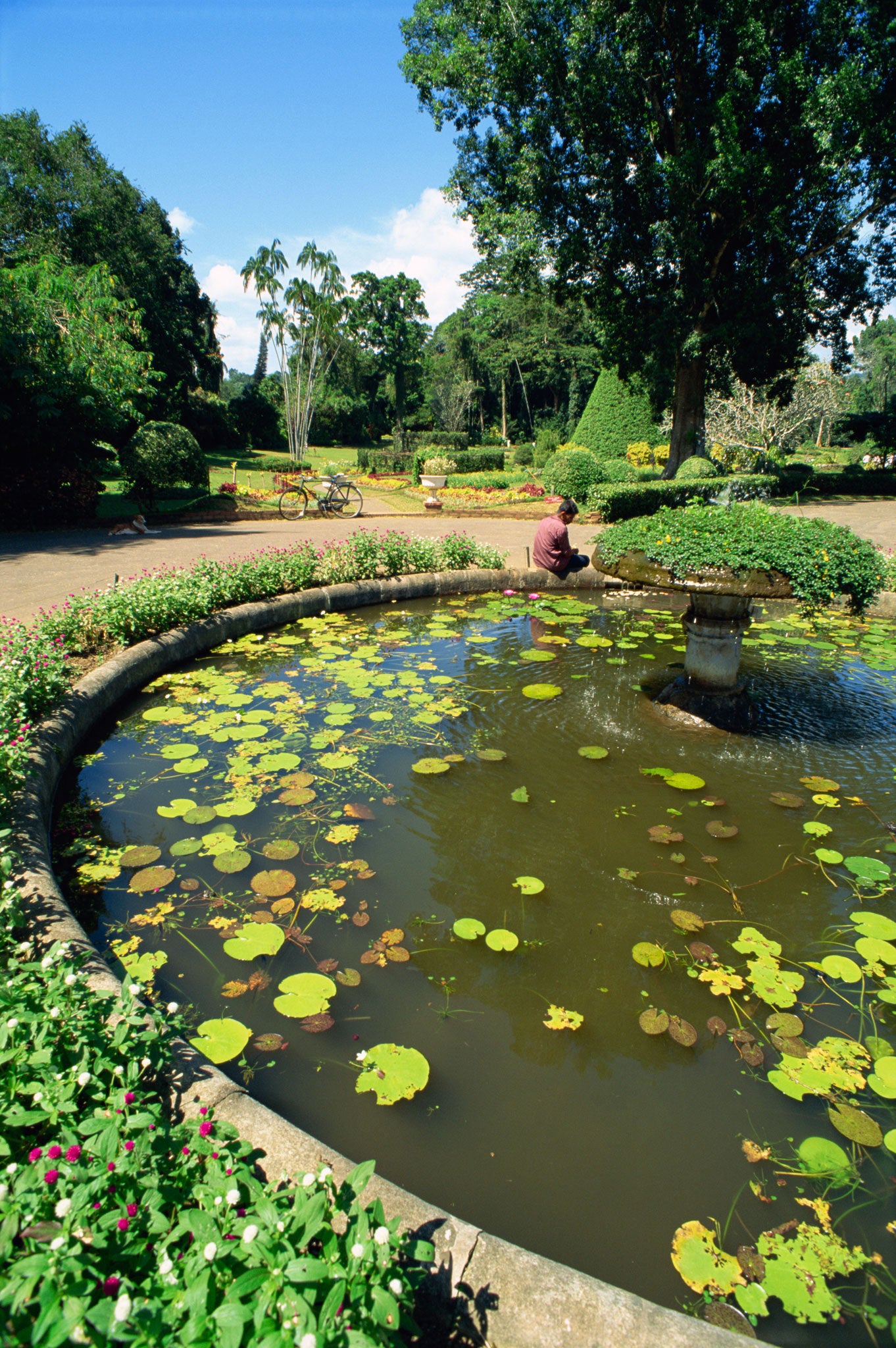The resplendent isle: Sri Lanka's botanical gardens are so lush, almost all of the plants are unfamiliar - and stunning
When the great architect Geoffrey Bawa made his garden at Lunuganga, he described it as "a garden made in a garden", the larger garden being the landscape of Sri Lanka.
The island is about the size of Ireland, but with four times the population. It contains a huge variety of landscape, from the mountains of the centre – several of whose peaks are well over 2,000 metres – to the flat, coastal plains. And, of supreme importance in the tropics, there is abundant water. Water is also important in Buddhist rituals, so it is no surprise that one of the earliest and most remarkable gardens on the island is the 5th-century water garden at Sigiriya.
The formally laid-out, rectangular pools are edged in stone and, astonishingly, the miniature fountains still work. These gardens were made far from the royal palace, as was the Royal Goldfish Park at Anuradhapura, Sri Lanka's earliest capital. But in these gardens, plants are of little importance, and it is Sri Lanka's botanical riches that are one of the great delights of the island.
To enjoy these, go to the botanical gardens of Hakgala or Peradeniya. The first lies high in the hills near Nuwara Eliya, whose golf links, race course, Victoria Park and red pillar boxes have earnt it the nickname 'Little England'. The Hakgala gardens were first established to grow cinchona, the plant from which quinine is extracted. But much more interesting, and much better maintained, are the gardens of Peradeniya, which lie just outside the beautiful hill town of Kandy.

Here, the impeccable labelling allows us to discover the names of plants that are almost always unfamiliar. Palmyra palms, royal palms and cabbage palms planted as avenues make a huge impact, and give the garden a firm, elegant design structure. The only problem is that if you venture off the path to smell a bloom or look at a plant more closely, you are liable to stumble over a canoodling couple, taking advantage of the garden to find the privacy that their crowded homes deny them.
In January, the hedgerows are full of hibiscus, lantana, hollyhocks, jasmine and morning glory, so clearly Sri Lanka is notf a difficult place to grow plants. The problem for the gardener is that everything grows too well, so there's a constant need to keep the jungle at bay.
At Brief, not far from Galle in the south-west of the island, Geoffrey Bawa's older brother, Bevis, made a celebrated garden. His battles the wilderness; there is a lawn, impeccably flat and beautifully mown, and an ill-proportioned, pretentious water stair that faintly echoes the high Renaissance garden of the Villa Lante in Italy. The entrance drive is lined with the red trunks of sealing-wax palms that are dramatically beautiful, but otherwise the garden seems to be fighting for its life against the encroaching jungle.

Local conditions are resented rather than embraced, which makes this garden very different from Lunuganga. While Geoffrey thought more like a sculptor in shaping the land, Bevis approached gardening more as a painter. He loved to work with colour, as can be seen from the bright blue he used on the doors in his garden at Brief.
He, of course, also loved flowers and set up a nursery to supply his own garden and the growing number of Colombo's middle classes who were becoming interested in making their own gardens. Finally, he set up a design practice and his work can be admired at the Sigiriya Village Hotel with its beautifully grouped trees and extensive use of water.
When Geoffrey Bawa bought the small rubber estate outside the village of Bentota in 1948, there was no garden and the trees obscured the views. But Bawa saw the potential of the site which lies on a ridge above the brackish inlet called Dedduwa Lake; this gives Lunuganga its name 'Salt River'. First, the rubber trees had to be cleared, and then the land had to be shaped. The hill above the salt lake was cut away to make it more dramatically sheer.
On the other side of the house, another hill cut off the view of a second stretch of water, so Bawa had the hill lowered, leaving one tree on the intermediate horizon with a great jar under it. These attracted the eye to the middle distance, then beyond the water stands a white 'dagoba', or shrine, a perfect, distant 'eye-catcher'. Like Ian Hamilton Finlay, Bawa worked without a plan, but with a vision. The garden grew slowly. Exotic trees were added, such as the pair of twisting frangipani on the main lawn outside the house. And the buildings he designed blend perfectly with the planting.
Sri Lanka, the Resplendent Isle, was where, according to legend, Adam's foot first touched land after his expulsion from Paradise. And maybe he thought himself in another paradise. Certainly tourism is booming; between 2010 and 2011 the number of visitors to the island grew by 40 per cent. And Sri Lankans in this post-imperial, post-civil war age are rediscovering the pleasures of garden making, as a glance over any fence in a Colombo suburb, or along the coast near Negombo, will confirm.
Visiting the gardens
Sigiriya water gardens are part of the Unesco World Heritage site and lie under the soaring, much photographed rock. Open 8.30am to 5.30pm daily; entrance charge.
Anuradhapura, the ancient capital, is an enormous site, lying north of Kandy. The Royal Pleasure Gardens (or Royal Goldfish Park) lie under the dam, near the Tissa Wewa reservoir.
Peradeniya and Hakgala Botanical Gardens lie in the hills east of Colombo. Hakgala is not far from Nuwara Eliya, open 8am to 5pm daily; entrance charge. Peredeniya is just outside Kandy, open 7.30am to 5pm daily; entrance charge.
Lunuganga and Brief lie not far from each other, just inland from Bentota on the south-west coast. Both gardens are open by appointment. Lunuganga: +94 (0)11589212. Brief: +94 (0)342274462.
Join our commenting forum
Join thought-provoking conversations, follow other Independent readers and see their replies
Comments